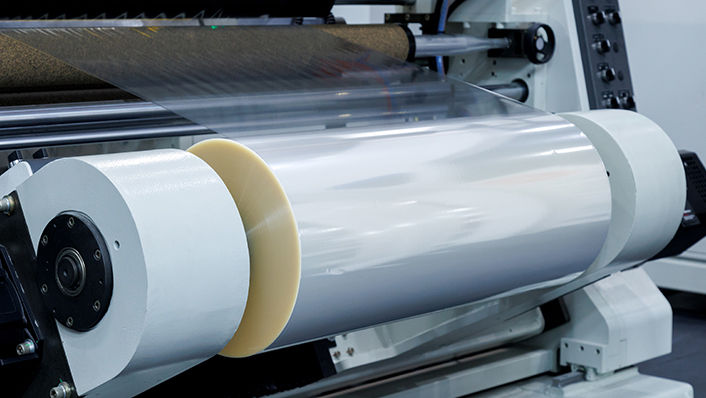Upgrading Your Anti-blocking Agent for Thin Plastic Films

Frequently Asked Questions about Anti-blocking Agents and the Advantages of SYLOBLOC® P 05
When manufacturing thin plastic films, “blocking”— when plastic film layers tend to adhere together—is a common challenge. Plastic films of various polymer compositions are known to have a high coefficient of friction that can cause layers to stick to one another, leading to tearing and being difficult to separate, compromising the quality of the final product.
Anti-blocking agents mitigate this problem by introducing microroughness to the film’s surface, reducing the contact area and helping to prevent the layers from sticking together. Traditional anti-blocking agents include talc and natural silica, each of which must be added at high concentrations to be effective. Although they are sufficient at anti-blocking, these agents can adversely impact the film’s optical properties, reducing its clarity. A consumer’s perception of cloudiness in the plastic film may negatively affect the choice to purchase the product being wrapped in the film. Because appearance matters, the film’s optical properties can have a significant impact on product sales for the film’s end-user.
SYLOBLOC® P 05 is an anti-blocking agent from Grace for low-density polyethylene and linear low-density polyethylene films. It provides anti-blocking efficiency for thin films without sacrificing visual appeal.
Below, Gonda Van Essche, director of technical customer service in Grace’s Materials Technologies division, answers some questions about SYLOBLOC® P 05 and how it compares with conventional anti-blocking agents.
How does SYLOBLOC® P 05 compare with natural silica or talc in terms of film optical properties such as haze and clarity?
SYLOBLOC® P 05 offers better optical properties than natural silica or talc at equivalent anti-blocking performance. The anti-blocking effect is driven by the number of particles at the film surface. Since SYLOBLOC® P 05 has a lower density than talc or natural silica, a lower concentration is needed to reach the same number of particles. SYLOBLOC® P 05 also has a narrow particle size distribution, allowing for a more homogeneous film surface, which leads to better optical performance.
Is there a reduction in the dosage of anti-blocking aids when using SYLOBLOC® P 05 compared with natural silica or talc?
Yes. SYLOBLOC® P 05 is two to three times as efficient as natural silica and one-and-a-half to two times as efficient as talc.
What is the highest SYLOBLOC® P 05 dosage that can be incorporated into a masterbatch?
The SYLOBLOC® P 05 concentration can be as high as 50%. While this is slightly lower than some other anti-blocking agents, the efficiency is much higher, meaning that the total masterbatch required can still be reduced.
Are there any safety concerns when using SYLOBLOC® P 05?
No, since it is an engineered, synthetic amorphous silica. While natural silica and talc contain crystalline silica, which can cause silicosis, lung cancer, and other respiratory diseases, SYLOBLOC® P 05 is composed of amorphous silica that is not associated with these hazards.
What is the wear on equipment when using SYLOBLOC® P 05?
Because SYLOBLOC® P 05 is softer and less abrasive than natural silica, it exerts less wear and tear on extrusion equipment. For example, SYLOBLOC® P 05 is rated at approximately 2-3 on the Mohs hardness scale, while natural silica can rate as high as 7.
Will SYLOBLOC® P 05 impact filter lifespan?
SYLOBLOC® P 05 has a narrow particle size distribution and does not contain coarse particles like those found in natural silicas. Coarse particles can block filters during extrusion, building pressure on the screen. The screens need to be exchanged frequently, which results in productivity losses.
Manufacturing teams that use SYLOBLOC® P 05 can use the same filter for longer periods without interruption.
Is SYLOBLOC® P 05 compatible with fluoropolymers or other processing aids?
Yes. SYLOBLOC® P 05 is compatible with fluoropolymers.
For more information about SYLOBLOC® P 05 and Grace’s entire portfolio of anti-blocking agents, go here.